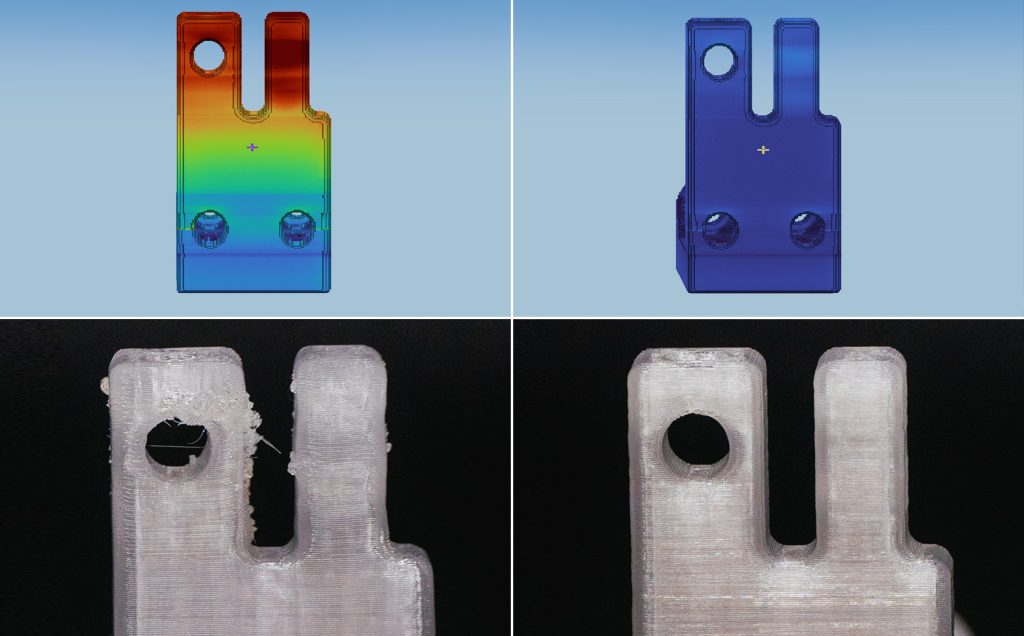Montreal based high temperature 3D printer manufacturer AON3D has announced that it will give a sneak preview of its new machine learning-driven thermal optimization software at RAPID + TCT 2023.
The software, set to be demonstrated at booth #4241 during the event in Chicago, is a core technology simulation engine built specifically for Material Extrusion (MEX). This new tool can provide fast and accurate predictions on heat flow behavior within an object during printing.
The software is said to offer the potential for cost cutting, improved part reliability and consistency, performance optimization and better technical decision making. The output can be used throughout all stages of a build, including build preparation process for parameter optimization, pre-build QA/QC, and post-build inspection.
The company states that this new software will “enable engineers to make informed design and process optimization decisions by incorporating an entirely new form of quantitative data.” And that, when used in conjunction with AON M2+ High Temperature 3D Printer and Readyprint filaments, “manufacturers can achieve a new level of consistency and part confidence across machines and production runs, reducing the need for time-consuming testing and quality management.”

Optimized thermal and heat flow simulations
Traditional build preparation, or ‘slicer’, softwares possess limited capabilities for simulating thermal and heat flow behavior. Slicer’s generally offer a “one size fits all” approach when applying thermal and speed parameters, or can even require extensive manual user interventions for this process.
To remedy this problem, AON3D’s new tool is said to provide users with a full visualization of heat flows and temperatures throughout a part. Fully structured raw data can also be outputted to be used in other analytical software, such as structural FEA, or external post-processors. As a result, the company claims that these capabilities will make it easier to assess how process decisions impact specific outcomes, enabling the user to take corrective action prior to printing, or determine inspection requirements after the print.
The generated data is also said to be incredibly detailed, with spatial resolutions as low as ⅓ the width on an extruder polymer bead. The company claims that this transient simulation can inherently account for complex part features and regions, resulting in the production of strong and accurate parts.
Composites and semi-crystalline polymers, which often pose challenges for modeling and simulation, are also set to be tackled by AON3D, and will include popular materials such as PEEK, Nylon, PAEK, and PEKK.
In addition to previewing this software, AON3D has also announced that it will be accepting beta clients for testing, with more information available via the company’s website.

New software for optimized 3D printing
AON3D is not the only company to announce software aimed at improving the user experience during 3D printing. For instance, in March of this year, industrial software specialist Hexagon AB launched Nexus, a cloud-native platform offering optimized workflow and Design for Additive Manufacturing (DfaM) tools. Not dissimilar to AON3D’s offering, Nexus also incorporates machine-learning material behavior simulation capabilities. This allows the user to simulate and locate materials that may not have been previously tested.
Elsewhere in March, 3D printing software leader Materialise released its Process Control software for metal 3D printing and the Build Processor Software Development Kit (BP SDK). Materials Process Control enables the user to analyze and correlate layer data from the 3D printing process, allowing problematic parts to be identified prior to post-processing and quality inspection. Additionally, the build processor handles 3D printer-specific data, allowing users to modify build settings, impacting the speed of the print job and defining component attributes like density and surface quality.
Subscribe to the 3D Printing Industry newsletter to ensure you keep up with the latest 3D printing news. You can also follow us on Twitter, like our Facebook page, and subscribe to the 3D Printing Industry Youtube channel to access more exclusive content.
Are you interested in working in the additive manufacturing industry? Visit 3D Printing Jobs to view a selection of available roles and kickstart your career.
Featured image shows AON3D thermal simulation and printed results. Photo via AON3D.


